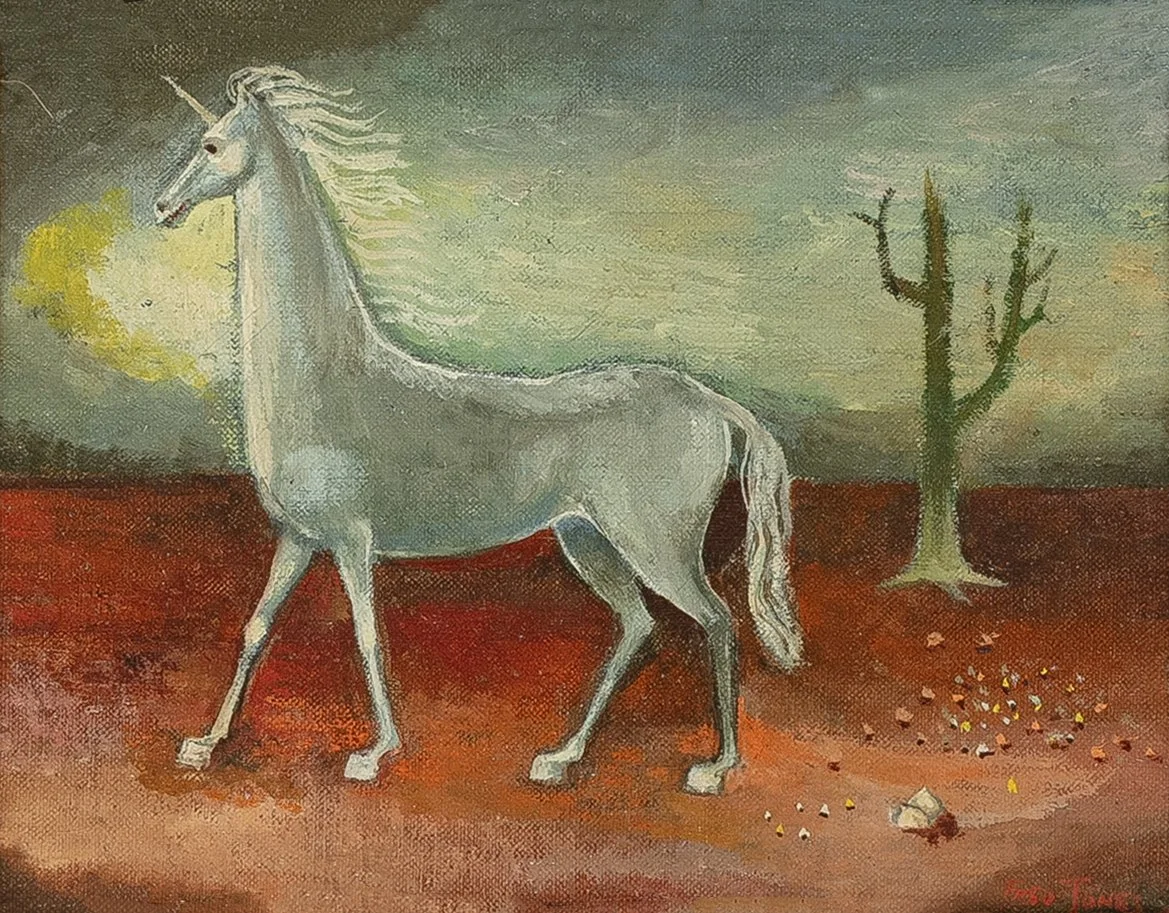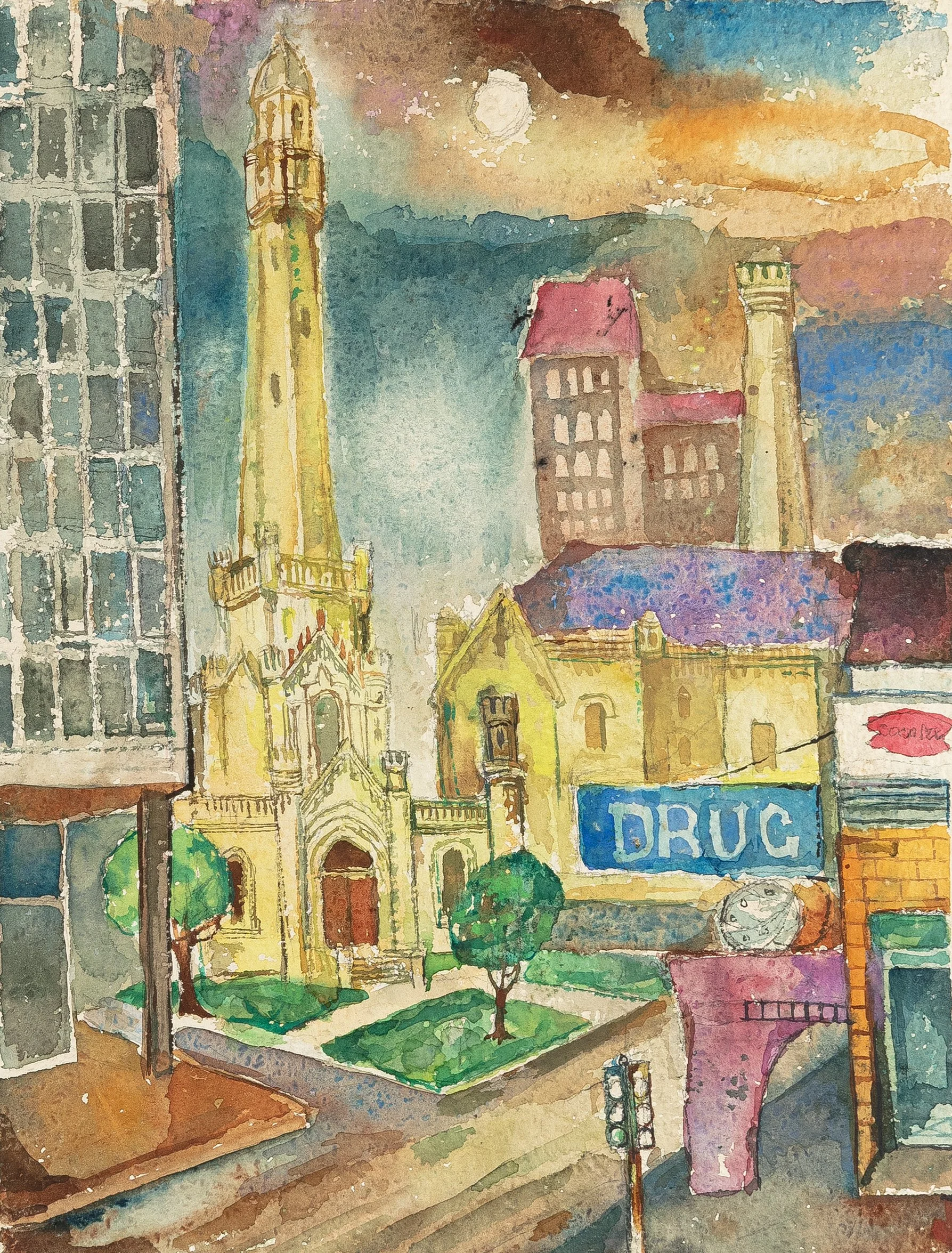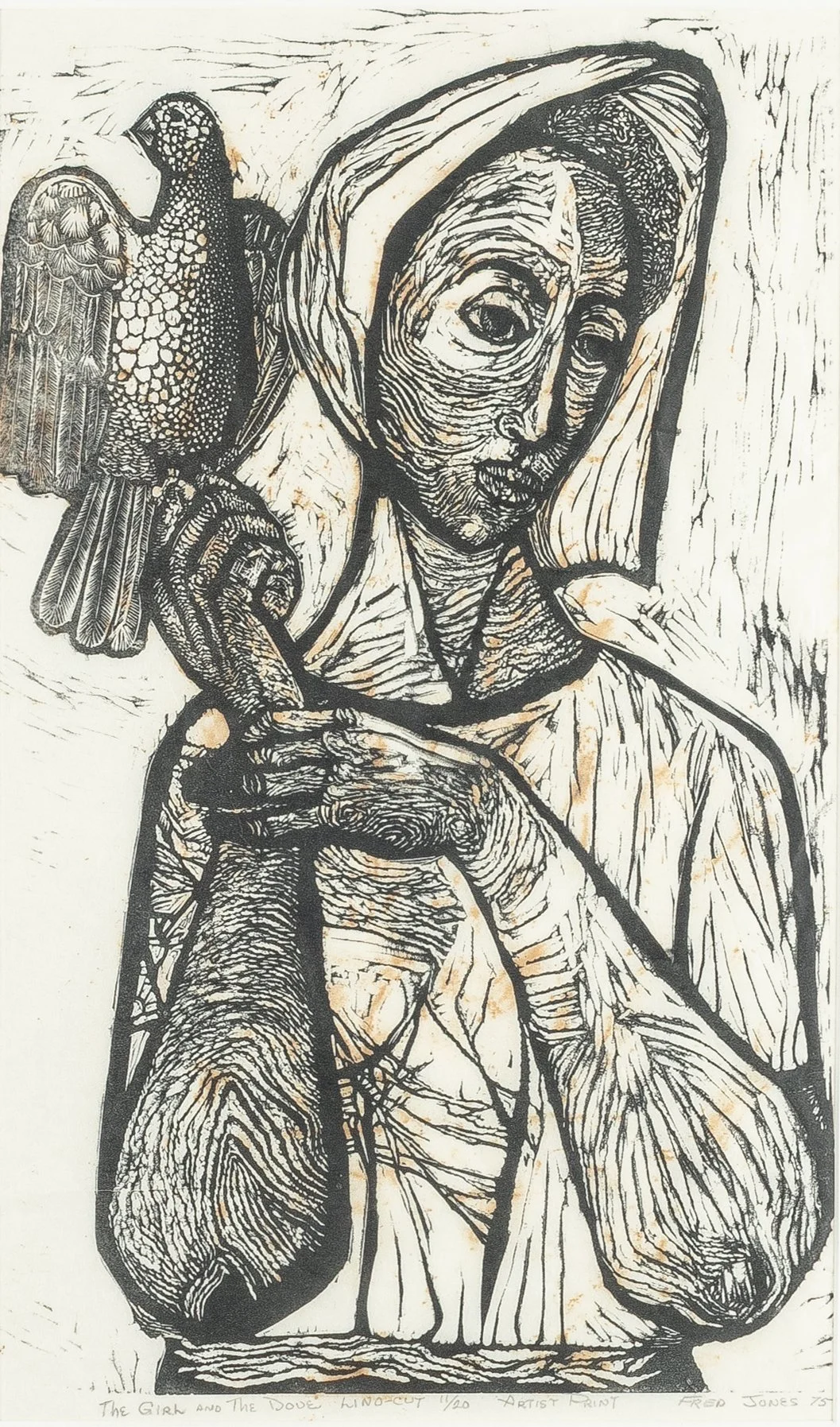
Fred D.
Jones, Jr.
(1914-2004)
Eve
1975
linoleum cut print
12-1/2 x 23-1/2 inches (image), full margins
signed, dated, titled and numbered 7/20, with AP

Fred Jones’ modernist watercolor compositions often revealed the influence of Eldzier Cortor, a mentor of his at the Art Institute of Chicago. Jones’s canvasses often held tall, languid African American women in other-wordly surroundings.
Jones’s work is a remarkable synthesis of elements and influences that he was exposed to throughout his life, as well as an innate sense of design and sensitivity to his subjects. His indelible style was shaped first at Morehouse and Spelman Colleges and Clark Atlanta University in Atlanta, Georgia. During this time, Hale Woodruff took him under his wing, along with fellow artist Wilmer Jennings. Jones was one of the lucky students who Woodfuff selected to assist him with murals for Talledega University.
Jones went on to study at the Art Institute of Chicago, with the financial help of a generous patron, Harrison Jones, an executive at Coca Cola. He studied painting with Louis Ritman, an American Impressionist with Paris connections. The Chicago and Vicinity Exhibitions featured Jones’s work from 1946 to 1951. He was also involved with the South Side Community Art Center, serving as an assistant director in 1947 under Rex Goreleigh.
He focused on the technical aspects of color, applying it to his art - the telling of the story of Black struggle. An interview quoted Jones as saying that Cortor “taught him that he could make the struggle beautiful.”
Jones entered work in the Atlanta University Annual in 1942 and, in 1943, won its Second Purchase Award for Watercolor in 1943 for the painting, Wash Day.
From 1943 to 1946, he served in the US Navy along with fellow artist Hughie Lee-Smith. When he returned to the Art Institute, the First Church of Deliverance, Chicago, commissioned him to paint two murals. Jones continued to work at Coca-Cola, painting in his spare time. He exhibited in the Atlanta University Annuals 18 times between 1942 and 1961 and participated for many years in the 57th Street Art Fair in Chicago.
His work has been featured in many prestigious exhibitions including The Flowering: African-American Artists and Friends in 1940s Chicago: A Look at the South Side Community Art Center, Illinois State Museum, Chicago, IL, 1993; Two Black Artists of the FDR Era: Marion Perkins, Frederick D. Jones, DuSable Museum of African American History, Chicago, IL, 1990; and The Great Migration: The Evolution of African American Art, 1790-1945, Taft Museum of Art, Cincinnati, OH, 2000.
In 2018, the Smart Museum, Chicago, IL, included his work in the exhibition, The Time is Now! Art Worlds of Chicago’s South Side 1960-1980.
untitled, The Unicorn
c. 1955
oil on canvas
8 x 10 inches
signed
Quinn Chapel Church
n.d.
watercolor on Arches paper
13 x 10 inches (image)
signed twice and titled
double-sided with a view of the city verso.
Quinn Chapel AME Church, located at 2401 S. Wabash Ave, houses Chicago's first African American congregation, formed by seven individuals as a nondenominational prayer group that met in the house of a member in 1844. In 1847, the group organized as a congregation of the African Methodist Episcopal Church, the first independent black denomination in the United States. They named the church for Bishop William Paul Quinn.




